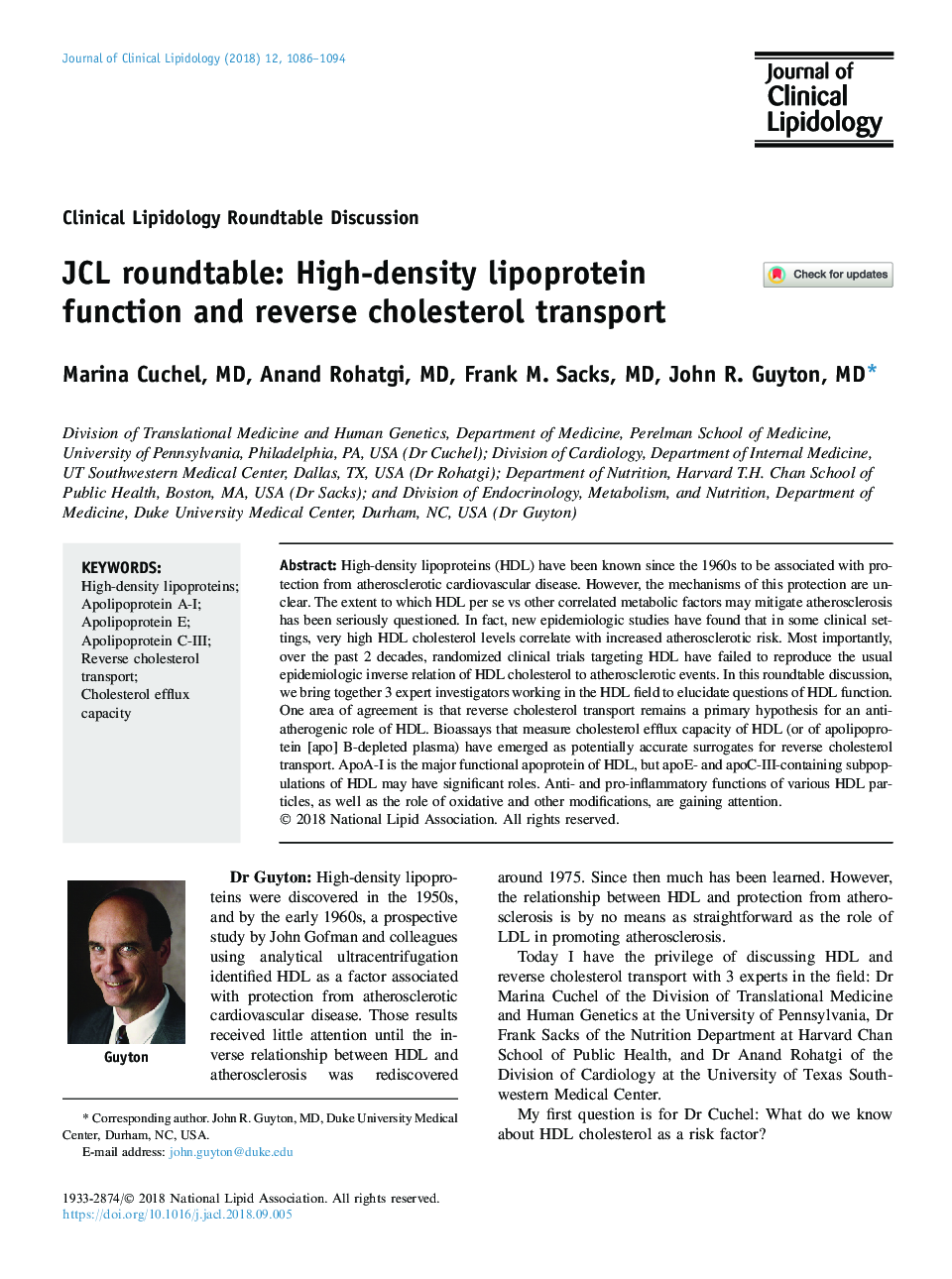| Article ID | Journal | Published Year | Pages | File Type |
|---|---|---|---|---|
| 11008559 | Journal of Clinical Lipidology | 2018 | 9 Pages |
Abstract
High-density lipoproteins (HDL) have been known since the 1960s to be associated with protection from atherosclerotic cardiovascular disease. However, the mechanisms of this protection are unclear. The extent to which HDL per se vs other correlated metabolic factors may mitigate atherosclerosis has been seriously questioned. In fact, new epidemiologic studies have found that in some clinical settings, very high HDL cholesterol levels correlate with increased atherosclerotic risk. Most importantly, over the past 2Â decades, randomized clinical trials targeting HDL have failed to reproduce the usual epidemiologic inverse relation of HDL cholesterol to atherosclerotic events. In this roundtable discussion, we bring together 3 expert investigators working in the HDL field to elucidate questions of HDL function. One area of agreement is that reverse cholesterol transport remains a primary hypothesis for an anti-atherogenic role of HDL. Bioassays that measure cholesterol efflux capacity of HDL (or of apolipoprotein [apo] B-depleted plasma) have emerged as potentially accurate surrogates for reverse cholesterol transport. ApoA-I is the major functional apoprotein of HDL, but apoE- and apoC-III-containing subpopulations of HDL may have significant roles. Anti- and pro-inflammatory functions of various HDL particles, as well as the role of oxidative and other modifications, are gaining attention.
Keywords
Related Topics
Health Sciences
Medicine and Dentistry
Cardiology and Cardiovascular Medicine
Authors
Marina MD, Anand MD, Frank M. MD, John R. MD,
